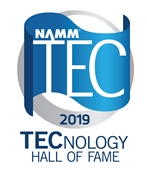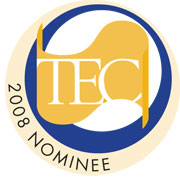A leader in critical audio recording products for 30 years, Millennia gear is used by the most discriminating clients worldwide in classical music recording, studio recording, film scoring, sampling, live sound, acoustic music, mastering, archiving, and acoustic research.
With over 30 industry awards, 40,000+ channels in use, and thousands of top industry clients, Millennia continues to set precedent in dynamically stable, timbre-neutral audio paths, from microphone capture to consumer delivery. In the world’s great symphony halls, to the Library of Congress, from Hollywood’s top scoring stages, to countless recording, post and mastering rooms – Millennia has likely played a role in some of the music you’ve listened to today.
Awards
- NAMM TEC Hall of Fame Inductee 2019
- 14 TEC Award Nominations
- 5 PAR Excellence Awards
- 2 Stereophile Class A Awards
- 2 PAR Reviewer's Pick Awards
- 2 ProSoundWeb Readers' Choice
- The Mix Top 20: Audio Products of the Year (HV-316)
- Pro Sound News Product of the Year (HV-316)
- Resolution (UK) Award
- Resolution (UK) Nomination 2020
- ProSound Network Best of Show
- FutureMusic Platinum Award
- Positive Feedback Writer's Choice
- EQ Blue Ribbon Award
- Studio Sound (UK) Reader's Choice
Design Philosophy
Millennia started life as a classical music production company in 1990, working mostly with N. California symphony orchestras, ensembles and soloists. Our original HV-3 front-end was designed specifically for critical acoustic recording, maintaining acoustic purity and dynamic realism without regard to manufacturing cost. Word spread about our designs and recording engineers worldwide were asking us to build HV-3's for them. That was 30 years ago. Since those early years, we've become a foremost provider of ultra-high-performance recording equipment, and the world's most-used outboard microphone preamplifier for critical music recording (symphony orchestra, film scoring, critical acoustic, etc.). Our design philosophy has never varied. We continue to apply the most rigorous practices to audio design and manufacturing. If a Millennia circuit (preamp, EQ, dynamics, etc.) isn't the most accurate, neutral, dynamically-stable instrument of its type, we continue working until it is. It's no surprise that pre-owned Millennia products demand among the highest resale values in pro audio today.
Excerpts from a recent magazine interview
Q: John, in a world of preamps that “print” character on the sound, Millennia is known by not printing sonic character. Why do so many people choose Millennia?
I designed the HV-3 micamp over a period of years while recording symphony orchestras in Northern California. Classical music -- alas all critical acoustic music -- requires accurate, transparent, dynamically stable capture and reproduction. The microphone and micamp, sometimes operating with over 60dB of gain, can inject high amounts of “coloration” into an audio signal. Hence, critical acoustic recording engineers select mics and micamps that print the least amount of self-coloration (distortion). The HV-3 has the highest dynamic range of any micamp made today, and was designed over years of critical listening tests to assure the most neutral and dynamically correct microphone capture. The largest U.S. pro audio dealer (Sweetwater) has selected the HV-3 as their exclusive reference micamp when testing microphones, which we consider a great honor. More Hollywood feature films use Millennia micamps than any other. The HV-3 is the most-used micamp for classical music recording, worldwide. We’ve shipped over 50,000 channels into the world’s most discriminating studios, venues, remote rigs, live tours, ADR labs, and Foley stages.
Q: Avoiding the characteristics mentioned in the previous question ... is there a characteristic about Millennia Preamps that other brands don't have?
It’s really less about additive nature, and more about neutrality, the “lack” of nature. The HV-3 is simply like the very best Zeiss photographic lens which adds minimum aberration and color error. A great lens remains absolutely correct even at the extreme edges, and presents no ghosting, astigmatism, or flare. Similarly, a great micamp remains timbre neutral even at extreme dynamic ranges (both ultra-low and ultra-high), and presents no detectable transient distortions or slewing induced artifacts. In brief, that’s the HV-3 micamp. Granted, in audio recording, sometimes we want our mic and micamp to offer a high amount of color or vibe, for effect, just like we might use a “fish eye” or “pin hole” lens to achieve a unique look.
Q: What is your motivation or what are you pursuing at the moment to design a new preamp model?
Right now, we’re working on improving our A/D converter, to make it more “analog” with lower noise and higher dynamic range, just like our HV-3 micamp. When we go back and listen to our classical music recordings on analog tape, there’s a greater sense of “realism” and timbre purity than we often find with a digital recording. We’re seeking to achieve that sense of analog realism in a digital converter, especially at ultra-low levels, where digital aberations and non-linearity can become more obvious. We’ve actually been working on this for some years and have made great progress. I’m also working on updates to our phono preamplifier. Our LOC phono preamp is used by discriminating audiophiles worldwide. It’s the exclusive phono preamp used by the U.S. Library of Congress (they have 12 archiving rooms) to archive their collection of over 3 million records. The LOC is also used by many other top archiving labs around the world (Canada, France, Italy, etc.). As for micamp development, there’s really nothing we can improve on the HV-3. We believe it’s the most perfected micamp on the planet. It’s no surprise that pre-owned Millennia products enjoy some of the highest resale values on today's market. Our products are professional investments, not “throw-away” gear that will be obsolete in 5 or 10 years.
Q: John, what got you started into designing electronics?
My uncle and my dad were both engineers. My mom was an amateur jazz singer and my dad played classical violin. My dad purchased the first home stereo tape machine (made by The Voice of Music Corporation) in something like 1958. They always had interesting music on the turntable, from classical to jazz to rockabilly. I grew up saturated by a culture of technology and music. I started playing guitar at 7 years old, and started building audio equipment in junior high school. By the time I graduated high school, I had built a near complete audio recording studio from scratch, including preamps, EQs, mixers, amplifiers, and monitors.
About the time I finished high school, I met Pat Quilter, who had just left college and started a little audio electronics R&D shop (“Quilter Sound Company”) near my home in Orange County, California. He was cobbling up some really cool EQs and power amps and he let me borrow prototypes for our OC rock band, Pegasus. Looking back, I realize how incredibly inspirational and influential it was for me, as a teenager, to actually have contact with a young entrepreneur who was taking risks to build a career in audio. I never lost that vision and have been motivated by the “start-up mentality” all my life. Years later, Pat renamed his company "QSC"









.jpg)

.jpg)



























